Sand cherry: care, reproduction and protection from disease
Already in ancient times, people noticed and appreciated the noble beauty of the cherry tree. In Japan, the cherry blossom has become a symbol of the state, and in Russia, an attractive and useful culture has been endowed with truly magical qualities. So, many rituals and customs are associated with the flowering of a plant. The peasants believed that magic cherry branches would protect from bad weather, and that those placed on the marriage bed would ensure a happy life together. Cherry even got a second name - the bride's tree, personifying the beauty of a girl and the feminine principle in nature.
Another curious exception, far from the traditional idea, is the sand cherry. This type of plant is increasingly attracting the attention of amateurs who are attracted by the unusualness of rare garden crops, their original appearance and new taste nuances of famous fruits. What is so interesting about sand cherries and is it really necessary in a gardener's collection?
Content:
- Appearance and growing area
- Varieties of sand cherries
- Using sand cherries
- Reproduction
- Diseases and pests
- Care
Appearance and growing area
Sand cherry has the form multi-stem shrub:
- The height of which can be up to 1.5 meters. The shape of the shrub varies and depends on age.
- The red branches of a young plant are erect and compact. Perennial drooping gray branches disintegrate - spread, turning the bush into a densely branched elite.
- Particular attention is drawn to the leaves of the plant, which are absolutely different from classic cherry... They are distinguished by a leathery, rigid structure, an elongated oblong shape, reminiscent of willow leaves. From below they are covered with a silvery-white bloom, and from above they have a green tint. In autumn, the leaves are painted in spectacular shades of an orange-red palette.
- Sand cherry flowers are fragrant, white or delicate pink. The tree blooms late and is distinguished by a large number of inflorescences. Their life cycle is approximately 20 days.
- Cherry fruits can vary in color and taste. The range of shades is impressive: from pale light green to dark red and almost black colors. Astringency and astringent properties of sand cherry looks like bird cherry, which, by the way, is her closest relative and belongs to the same family. Possessing indisputable useful qualities, the berries are very specific in taste.
An interesting feature of the fruits: when ripe, they do not crumble, but remain to dry out on the branch. Cherries dried in the sun lose their astringency and acquire a wonderful taste.
A distinctive feature of the species is the increased frost resistance of the plant. The ability to grow in harsh climates is attributed to the origin of the sand cherry. In the wild, it appeared on the shores of lakes and in the river deltas of Canada and the northern part of the United States.
The sandy soil characteristic of those places gave the name to the species.
Varieties of sand cherries
Sand cherry has its own subspecies:
- So, the sandy cherry, the ancestor, is more typical for the eastern parts of North America. It is customary to call it eastern.In the west of the North American continent, a subspecies of culture grows, which is accordingly called the western sand cherry or Bessia. Thus, when it comes to growing sand cherries on the site, the Bessia subspecies is mentioned, since the black berries of the eastern low cherry are practically inedible, and the plant is only of decorative interest.
- The western subspecies is named after the American scientist C.E. Bessie. This cherry is also called American, dwarf or sandy cherry.
It is powerlessness that is actively used by breeders for breeding hybrid stone fruit trees.
The famous scientist I.V. Michurin. As a result, the first five varieties of the crop were created, which are distinguished by good taste. Besshie berries began to differ in color: varieties with yellow and dark purple fruits were bred.
Breeding work continues now. So, since 2011, the state fruit and berry laboratory in Chelyabinsk has officially identified eight varieties of the plant and continues to work with the selected varieties.
Using sand cherries
How can sand cherries be of interest to amateur gardeners? Culture is universal in many ways.
Let's highlight the main ways of using it:
- As protective plantings. Cherry bushes grow fast enough and are frost-resistant. They have a dense branched crown that can create a saving shade and protection from the wind for more delicate and whimsical plants.
- You can also consider sand cherry as a border element. The shrub will gracefully, but densely form the boundaries of the site, clearly highlight the zones, divide and structure the plantings.
- Decorative function. This is another advantage of the plant. In spring, cherries will refresh the garden with fragrant snow-white flowers. In summer, it will give fruits that decorate the branches with bright deep colors. Then it will turn into luxurious crimson-gold thickets, enlivening the inevitable autumn wilting of nature with spectacular strokes.
Thus, throughout the growing season, sand cherries do not lose their attractiveness.
In the USA, impossibility is popular as an ornamental shrub and is successfully used in landscaping landscaping. It tolerates a haircut well. Coupled with unpretentiousness and resistance to bad weather, sand cherry hardly has worthy competitors in its field.
- Fruit crop for a harsh climate. The choice of trees in this category for the colder regions of the country is very limited. In addition to frost resistance, sand cherries show excellent results in drought tolerance. Sand cherry bushes are compact and do not occupy much area. It is worth noting the high yield and early maturity of the species. At a time when the season of ordinary cherries has already ended, the sandy one is just beginning to bear fruit, which is another advantage.
- Yielding to the taste of ordinary cherries, sandy fruits can be used for processing. Besshie berries are suitable for drying, pickling, making jams, juices and compotes.
Cherry has all the useful properties along with its traditional types. Its fruits contain valuable micro- and macroelements, acids, vitamins, as well as pectin and folic acid.
- Use as a rootstock for stone fruit crops. Hybrids and varietal pool are often used as clonal rootstock for almonds, plums, apricots and peaches. The purpose of this crossing is to reduce the size of fruit trees. Recall that a stock is a plant onto which a cutting of the desired variety or type is grafted. It is curious that it is almost impossible to plant an ordinary cherry on a sandy cherry.
It is important to consider the support for the plant, as its branches can hardly support the additional load of grafted cuttings and often bend over.Another disadvantage is the fragility of grafted trees, which need constant rejuvenation.
Reproduction
Sandy cherries are propagated by seeds, seeds, layering, cuttings:
- The seeds are sown in open soil in fall or spring. To do this, you must first prepare the material. Moss is the optimal stratification aid. It breathes well, retains moisture, and is lightweight. It is best if the seeds are kept in it for two to three months. In autumn, they are planted towards the end of September. If planting is planned in the spring, then it is better to do this in mid-April. Cherry seeds embedded in moss are kept to swell at 18–20 degrees above zero. For their germination, the temperature is lowered to 4-6 degrees. The ideal storage place in this case is the refrigerator. Then, in order to prevent root growth, the temperature is lowered to 1 degree and immediately before planting, it is again maintained at a level of 18 degrees.
- For propagation by layering, horizontal, vertical and arcuate specimens are used. In the spring, the lower stems need to be bent to the ground and fixed. When the branches grow, they are covered with a layer of earth and humus in equal parts. The powder should be repeated later. In autumn, the accreted children are separated from the uterine bush and immediately transplanted to a permanent place.
- Another convenient way is to divide with green cuttings. Root shoots in trees grown in this way are excellent planting material. Even when the main bush dies out due to frost, the root remains viable. Moreover, when propagated by the root sucker, the cultivar is preserved.
For seedlings of cuttings, a substrate consisting of peat and sand is prepared.
The planting box is disinfected with a solution of potassium permanganate. The soil should be moderately moist to prevent rotting of the cuttings. The shoots from which the cuttings will be made should be cut from young shrubs for better rooting. This should be done in June and in the morning. The stalk is planted vertically, tightly tamping the soil around. For the winter, it is buried in, and planted on a permanent site in the spring.
Plant seedlings can be grown using the grafting technique.
As you can see, sand cherries reproduce quite easily, and the technique of the process is simple.
Diseases and pests
Sand cherry is quite disease resistant. But still there are ailments and pests that slow down the growth and development of the fruit tree.
Here are just a few of them:
- Monoliosis. A dangerous disease manifests itself after flowering. Diseased leaves and flowers wither, darken, dry up and do not fall off. It is necessary to remove and burn the affected branches, and treat the plant with a copper-containing agent. For example, copper sulfate.
- Curliness of leaves. This is a fungal disease in which the bushes bloom earlier than usual and do not bear fruit. The leaves become smaller, become tough. A whitish bloom appears on their underside. The methods of control are similar: excision of the affected areas and disinfection with copper sulfate.
- Clasterosporium disease. Again, the cause of the disease is a fungus. It infects buds, shoots, leaves and fruits. The leaves develop spots and then small holes. In such cases, spraying with Bordeaux liquid helps. It should be noted that for sand cherries, perforated spotting is a relatively rare disease.
- Cherry scab. Symptoms of the disease appear in the spring: a black bloom forms on the leaves on the underside and berries. Its cause is the sporulation of the fungus. The leaves darken and curl up, the fruits dry up and lose their turgor. The plant is sprayed with copper chloride. Affected fruits and leaves are harvested and destroyed.
- Plum moth. Despite its specialization, reflected in the name, this pest also does not disdain cherry. A butterfly is not as dangerous as a caterpillar. It is white, then turns pink. The problem is that the cherry fruit in which the caterpillar is located is almost indistinguishable from the healthy one.Spraying with special preparations helps: cymbush, rovikurt, cytkor.
- Cherry weevil. The beetle is green with a crimson-bronze tint. Usually up to 9 mm in length. Sand cherries are most often affected. In this case, the diseased berries of the bush crumble. You need to fight the weevil after flowering, treating the shrubs with karbofos, ambush, rovikurt or actellik. If damaged areas are found, a second spraying is carried out.
- Cherry aphid. Dangerous aphids by rapid reproduction. Its body is black on the top and brown on the bottom. An invasion of small ants can serve as a sign of the appearance of a pest, since they feed on the secretions of aphids. When aphids are damaged, the shoots are deformed and stop developing. Saplings lose their frost resistance and do not tolerate wintering well. The drugs that effectively deal with aphids are exactly the same as those used to deal with the cherry weevil. Additionally, you can dip branches and shoots in the above preparations. For example, in a solution of karbofos 50%.
To prevent the appearance of diseases, it is recommended to feed cherries with mineral and organic fertilizers. The plant needs trace elements such as copper, zinc, boron.
Care
The basic rules for caring for sand cherries are similar to all fruit:
- Watering
- Loosening the soil
- Fertilization and feeding
- Pruning branches
- Protection against diseases and harmful insects.
Even if the sand cherry is frost-resistant, it is worth considering protecting the plant from low temperatures. Smoke is one way. At the time of cherry blossoms, in the evening, heaps of straw are prepared, which are set on fire early in the morning before frost. The purpose of this operation is to obtain smoke, but not fire.
Another way to protect flowers is to prevent early flowering. For this, the ground under the crown is first covered with a layer of snow, and then with mulch - straw or sawdust will do.
In case of inactive pollination by bees during the rainy season, you need to spray the plant with honey dissolved in water at the rate of 20 grams per liter of water. The smell of honey will attract beneficial insects.
During the growing season, the plant needs feeding. It is better to do this twice: after flowering and after a month. The shrub is fed with a mullein solution with the addition of ash. The optimal fertilizer for Besseya is a mixture of superphosphate, urea and calcium chloride.
When buying planting material, you should make sure that the plant is grafted. Or varietal seedlings have their own root.
Obviously, the sand cherry is a worthy representative of the cherry family and deserves to settle on the site of amateur gardeners. The planting and propagation technique does not cause problems and is similar to other fruit trees and shrubs. The culture is ideally suited for climatic parameters, and the fruits have all the valuable qualities of ordinary cherries.



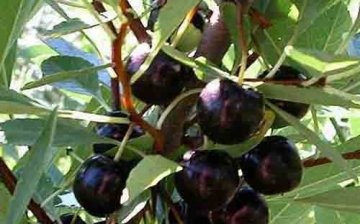

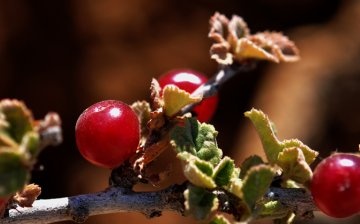
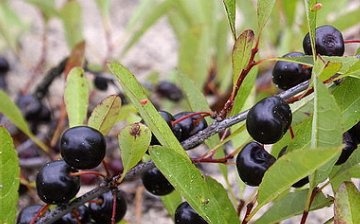
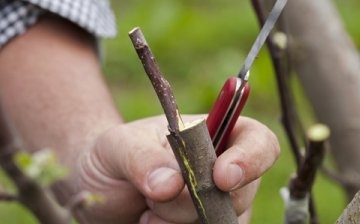
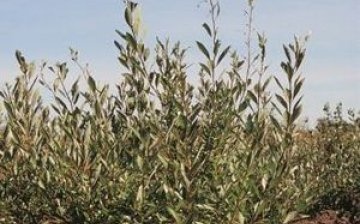
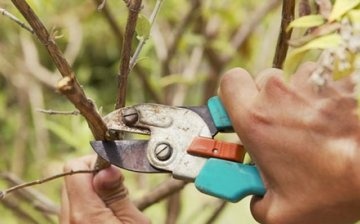







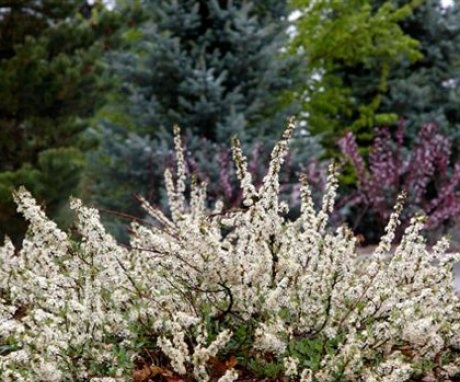
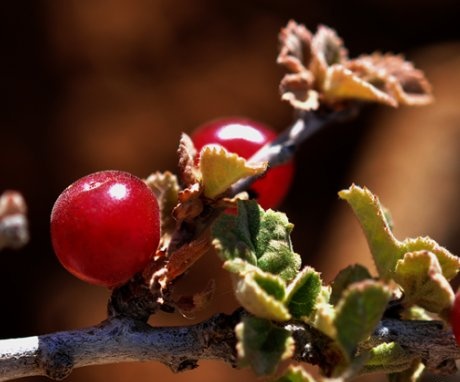

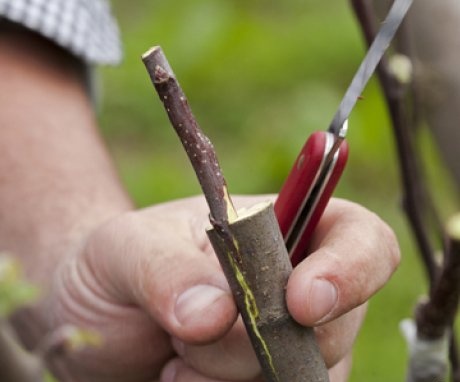
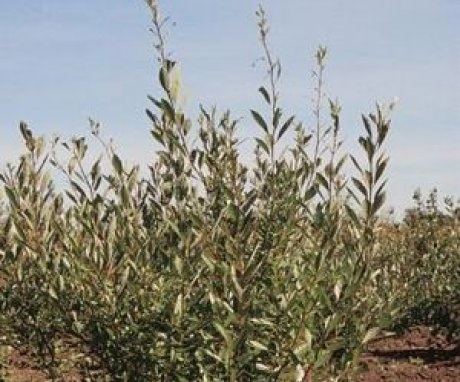
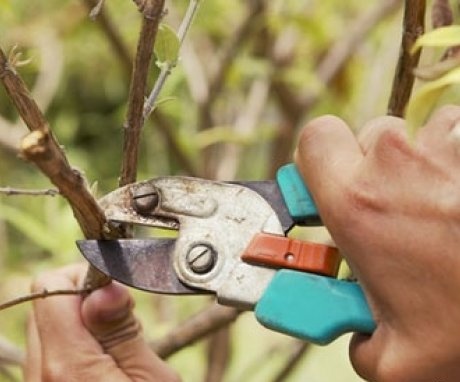
I first learned about such a cherry! It is very unusual that it grows as a short bush and, of course, the taste of berries. Yes, and the fact that the berries of this cherry lose their astringency after frost, like a blackberry.